Deeply Integrated GNSS/Gyro Attitude Determination System
Abstract
1. Introduction
2. Algorithm Synthesis
- I/Q components at the GNSS receiver’s correlator output, considered as the observations containing information about attitude hidden in carrier phase differences between antennas;
- Gyro measurements;
- Estimated state vector’s dynamic model.
2.1. Coordinate Systems and Phase Differences
2.2. Gyro Measurements and Attitude Integration
2.3. Correlation Signal Processing in GNSS Receiver
2.4. Synthesis of Deeply Integrated GNSS/Gyro Attitude Determination Algorithm
2.5. Common Signal Processing Algorithms in GNSS Receiver
2.5.1. Frequency Lock Loop
2.5.2. Delay Lock Loop
2.5.3. Amplitude Estimator
3. Simulation and Results
3.1. Antenna Geometry
3.2. GNSS Constellation
3.3. User Dynamics
3.4. Refernce Oscillator Dynamics
3.5. Gyroscope Parameters
3.6. I/Q Adaptive Accumulation
3.7. Integration Filter Convergence and Attitude Precision
3.8. Sensitivity and Attitude Precision in Range of SNR
3.9. Attitude Error during GNSS Outage
4. Discussion
4.1. Sensitivity
- Using all three antennas for the tracking of common Doppler frequency and code delay (+5 dB, approximately);
- Using deep integration of non-coherent tracking loops with INS and ultra-stable reference oscillator;
- Using pilot GNSS signals for tracking at low SNR.
4.2. Precision
4.3. Ambiguity Resolution
4.4. Cycle Slips
5. Conclusions
Author Contributions
Funding
Acknowledgments
Conflicts of Interest
Appendix A
References
- Grewal, M.S.; Andrews, A.P.; Bartone, C.G. Global Navigation Satellite Systems, Inertial Navigation, and Integration, 3rd ed.; John Wiley & Sons, Inc.: Hoboken, NJ, USA, 2013; pp. 54–107. [Google Scholar]
- Markley, F.L.; Crassidis, J.L. Fundamentals of Spacecraft Attitude Determination and Control; Springer: New York, NY, USA, 2014; pp. 140–147. [Google Scholar]
- Cohen, C.E. Attitude determination. In Global Positioning System: Theory and Applications; Parkinson, В.W., Spilker, J.J., Eds.; American Institute of Aeronautics and Astronautics: Washington, DC, USA, 1996; Volume 2, pp. 519–538. [Google Scholar]
- Suhandri, H.F. Instantaneous Estimation of Attitude from GNSS; Institute of Navigation, University of Stuttgart: Stuttgart, Germany, 2017; pp. 49–78. [Google Scholar]
- Zhao, L.; Li, N.; Li, L.; Zhang, Y.; Chun, C. Real-Time GNSS-Based Attitude Determination in the Measurement Domain. Sensors 2017, 17, 296. [Google Scholar] [CrossRef] [PubMed]
- Bakitiko, R.V.; Dvorkin, V.V.; Karutin, S.N.; Korogodin, I.V.; Nagin, I.A.; Perov, A.I.; Povalyaev, A.A.; Fatkulin, R.F.; Shatilov, A.Y. GLONASS. Modernization and Trends; Perov, A.I., Ed.; Radiotechnika: Moscow, Russia, 2020; pp. 735–855. [Google Scholar]
- Olesen, D.; Jakobsen, J.; Knudsen, P. Ultra-Tightly Coupled GNSS/INS for Small UAVs. In Proceedings of the 30th International Technical Meeting of the Satellite Division of the Institute of Navigation, Portland, OR, USA, 25−29 September 2017; pp. 2587–2602. [Google Scholar]
- Farrell, J.A. Aided Navigation. GPS with High Rate Sensors; McGraw-Hill Companies: New York, NY, USA, 2008; pp. 421–430. [Google Scholar]
- Soloviev, A.; Toth, C.; Grejner-Brzezinska, D. Performance of Deeply Integrated GPS/INS in Dense Forestry Areas. In Proceedings of the 24th International Technical Meeting of the Satellite Division of the Institute of Navigation, Portland, OR, USA, 19–23 September 2011; pp. 2427–2435. [Google Scholar]
- Liu, W.; Liu, B.; Chen, X. Multi-sensor Fusion Algorithm Based on GPS/MEMS-IMU Tightly Coupled for Smartphone Navigation Application. In Proceedings of the 30th International Technical Meeting of the Satellite Division of the Institute of Navigation, Portland, OR, USA, 25–29 September 2017; pp. 2973–2980. [Google Scholar]
- Dusha, D.; Mejias, L. Attitude Observability of a Loosely-coupled GPS/Visual Odometry Integrated Navigation Filter. In Proceedings of the Australasian Conference on Robotics and Automation, Brisbane, Australia, 1–3 December 2010. [Google Scholar]
- Li, Y.; Efatmaneshnik, M.; Dempster, A. Attitude determination by integration of MEMS inertial sensors and GPS for autonomous agriculture applications. GPS Solut. 2012, 6, 41–52. [Google Scholar] [CrossRef]
- Lai, Y.C.; Jan, S.S. Attitude estimation based on fusion of gyroscopes and single antenna GPS for small UAVs under the influence of vibration. GPS Solut. 2011, 15, 67–77. [Google Scholar] [CrossRef]
- Wu, Y.; Wang, J.; Hu, D. A New Technique for INS/GNSS Attitude and Parameter Estimation Using Online Optimization. IEEE Trans. Signal Process. 2014, 62, 2642–2655. [Google Scholar] [CrossRef]
- Cai, X.; Hsu, H.; Chai, H.; Ding, L.; Wang, Y. Multi-antenna GNSS and INS Integrated Position and Attitude Determination without Base Station for Land Vehicles. J. Navig. 2019, 72, 342–358. [Google Scholar] [CrossRef]
- Xu, P.; Shu, Y.; Niu, X.; Liu, J.; Yao, W.; Chen, Q. High-rate multi-GNSS attitude determination: Experiments, comparisons with inertial measurement units and applications of GNSS rotational seismology to the 2011 Tohoku Mw9.0 earthquake. Meas. Sci. Technol. 2019, 30, 1–23. [Google Scholar] [CrossRef]
- Ballal, T.; Bleakley, C.J. GNSS Instantaneous Ambiguity Resolution and Attitude Determination Exploiting the Receiver Antenna Configuration. IEEE Trans. Aerosp. Electron. Syst. 2014, 50, 2061–2069. [Google Scholar] [CrossRef]
- Teunissen, P.J.G. New Method for Fast Carrier Phase Ambiguity Estimation. In Proceedings of the IEEE Position Location and Navigation Symposium, Las Vegas, NV, USA, 11–15 April 1994; pp. 562–573. [Google Scholar]
- Perov, A. Tracking Algorithm for Estimating the Orientation Angles of the Object Based on the Signals of Satellite Radio Navigation System. Am. J. Appl. Sci. 2015, 12, 1000–1013. [Google Scholar] [CrossRef]
- Perov, A.I. Synthesis of Integrated One-stage Tracking Algorithm for GNSS and INS Based Attitude Estimation. J. Sib. Fed. Univ. Math. Phys. 2017, 10, 22–35. [Google Scholar] [CrossRef]
- Shatilov, A.Y.; Nagin, I.A. A Tightly-Coupled GNSS/IMU Integration Algorithm for Multi-Purpose INS. In Proceedings of the 25th International Technical Meeting of the Satellite Division of the Institute of Navigation, Nashville, TN, USA, 17–21 September 2012; pp. 867–873. [Google Scholar]
- Wahba, G. A Least Squares Estimate of Satellite Attitude. SIAM Rev. 1965, 7, 384–386. [Google Scholar] [CrossRef]
- Crisan, D.; Rozovskii, B. The Oxford Handbook of Nonlinear Filtering; Crisan, D., Ed.; Oxford University Press: Oxford, UK, 2011. [Google Scholar]
- Perov, A.I. Statistical Theory of Radiotechnical Systems; Radiotechnika: Moscow, Russia, 2003. [Google Scholar]
- Shatilov, A.Y. Reference Oscillator Short-Term Drift as it’s Sensed by GNSS Receiver. In Proceedings of the 27th International Technical Meeting of the Satellite Division of the Institute of Navigation, Tampa, FL, USA, 8−12 September 2014; pp. 2625–2634. [Google Scholar]
- Kaplan, E.D.; Hegarty, S.J. Understanding GPS/GNSS. Principles and Application, 3rd ed.; Artech House: Boston, MA, USA, 2017; pp. 452–454. [Google Scholar]
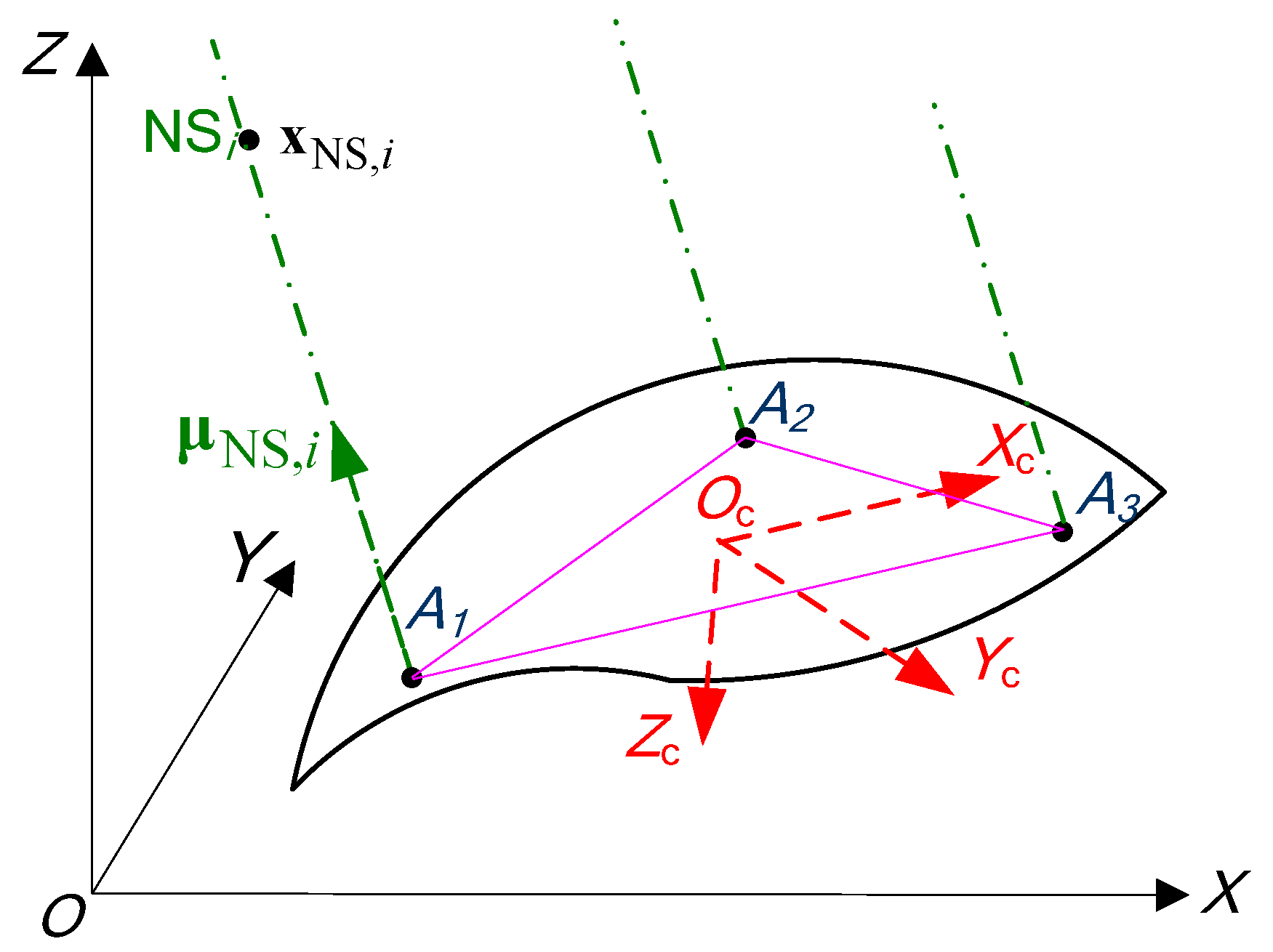


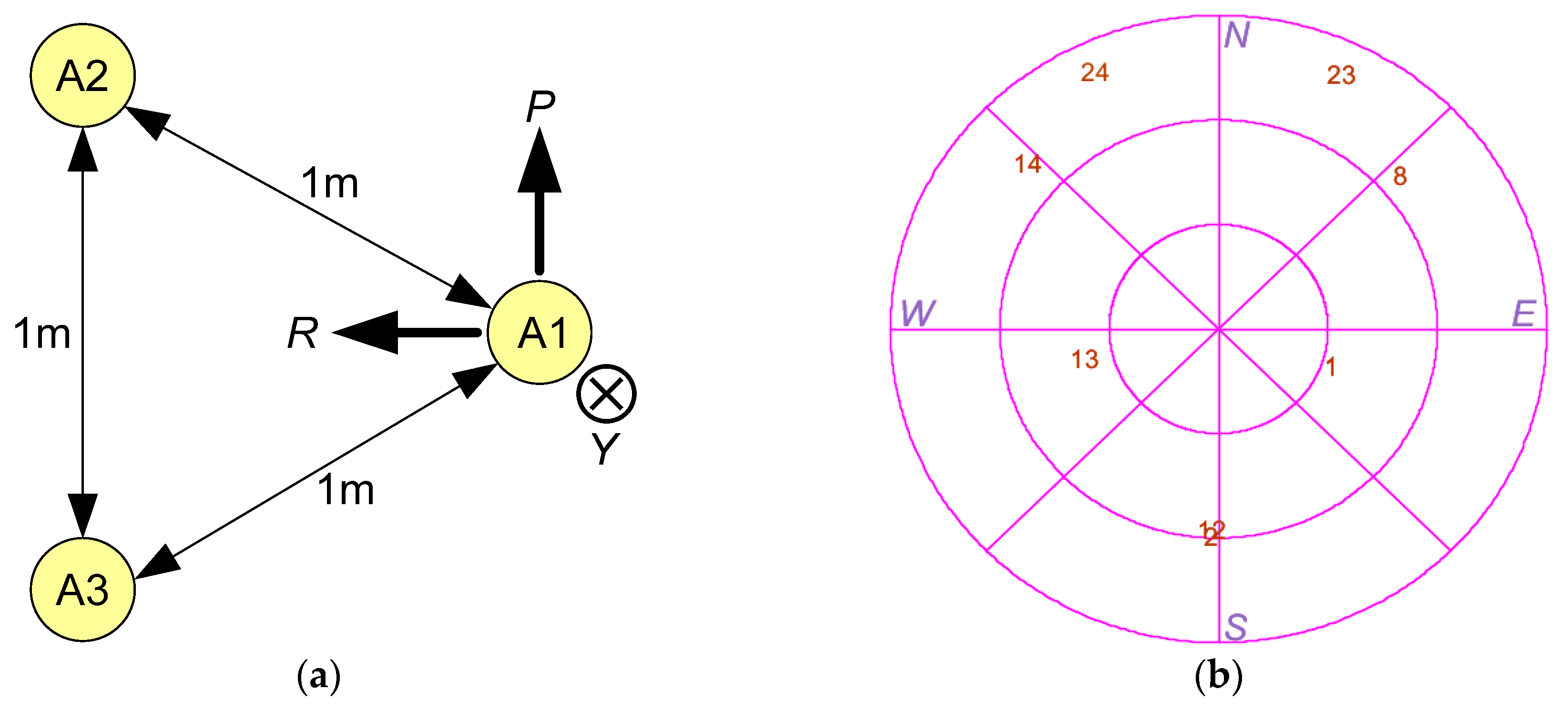





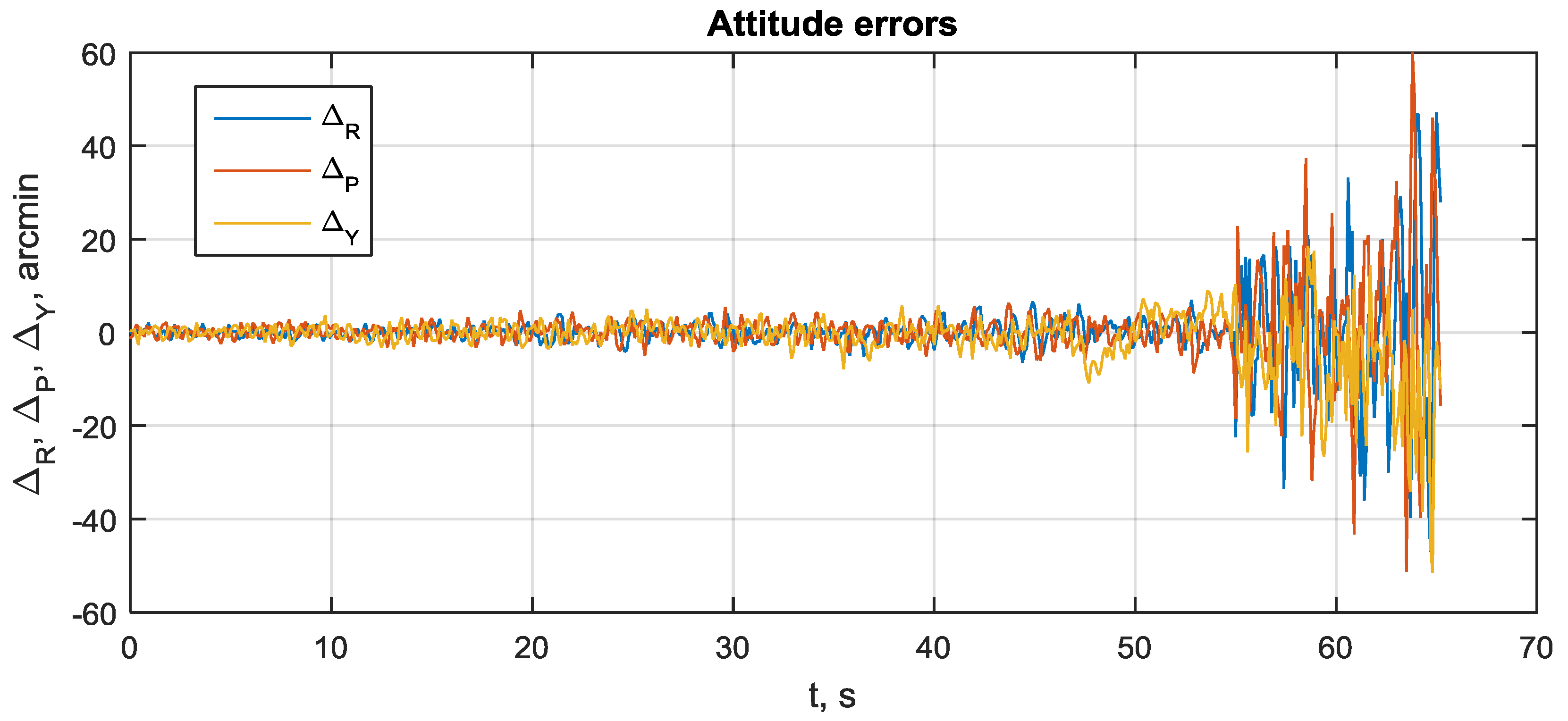
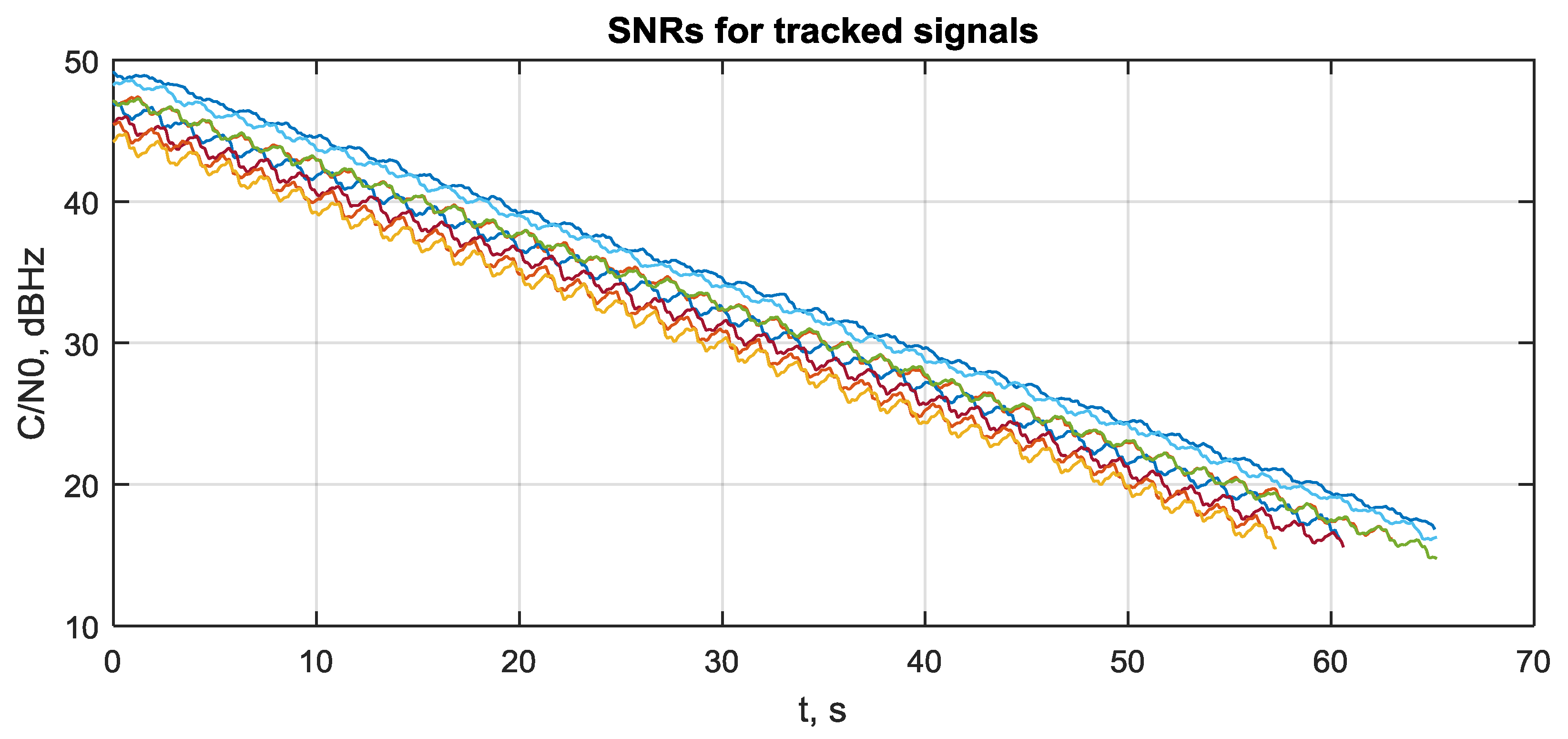
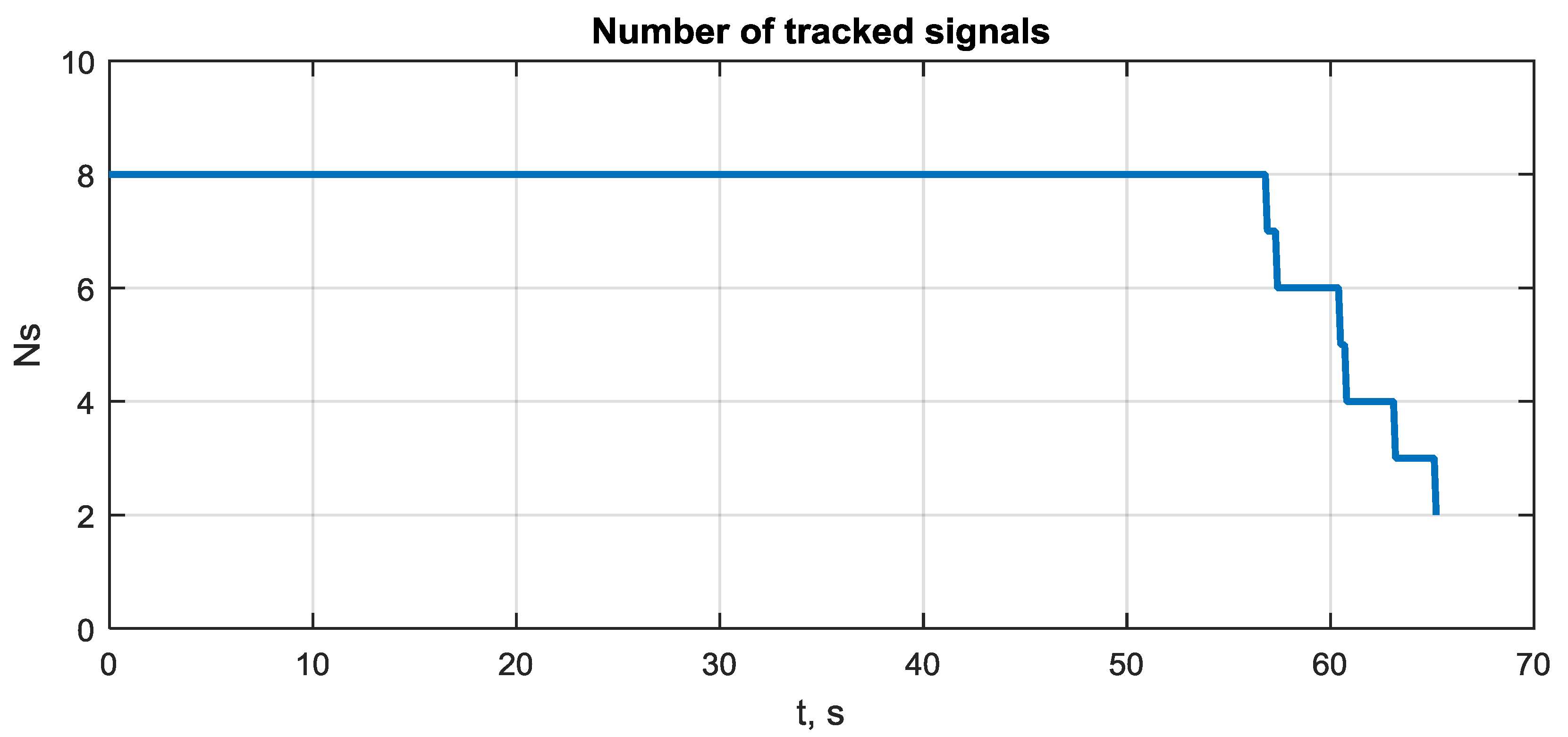
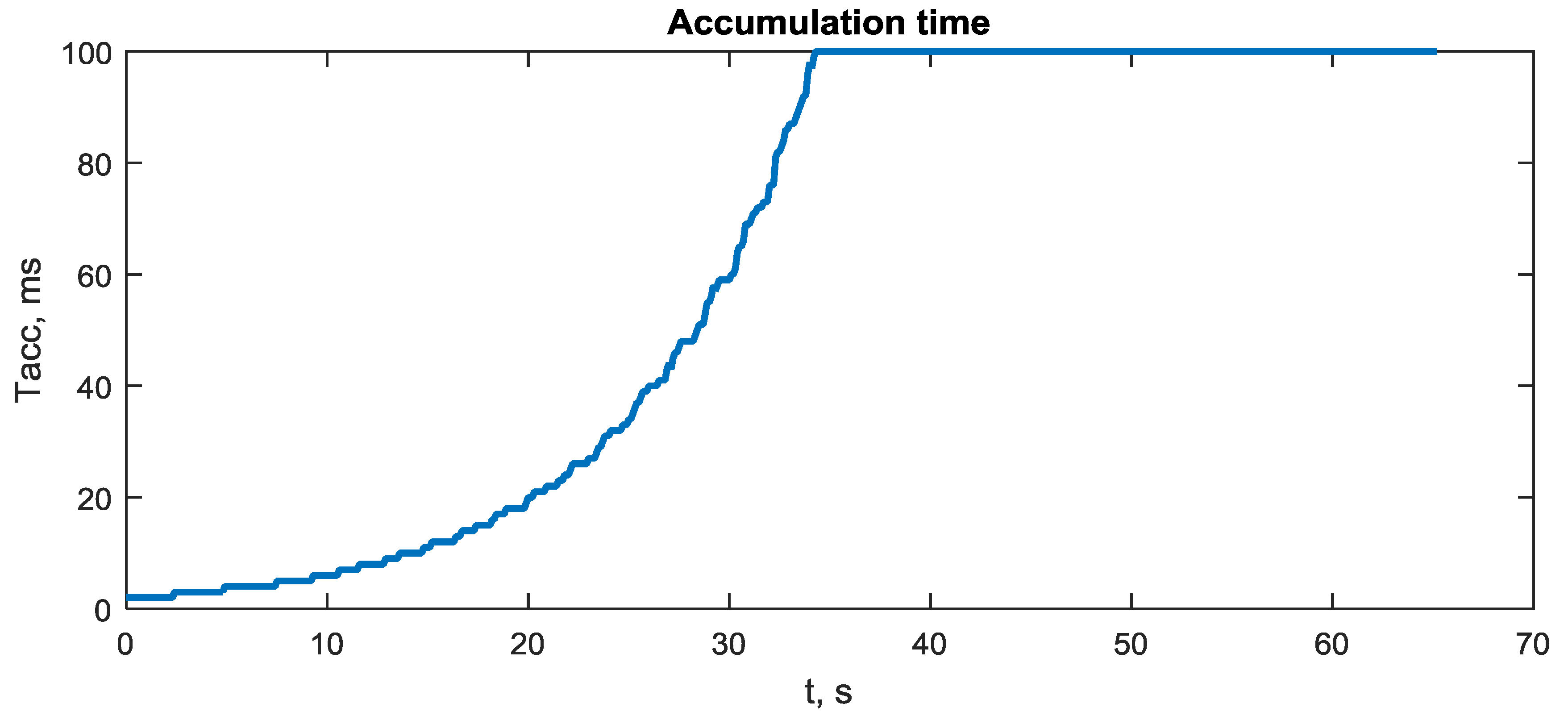
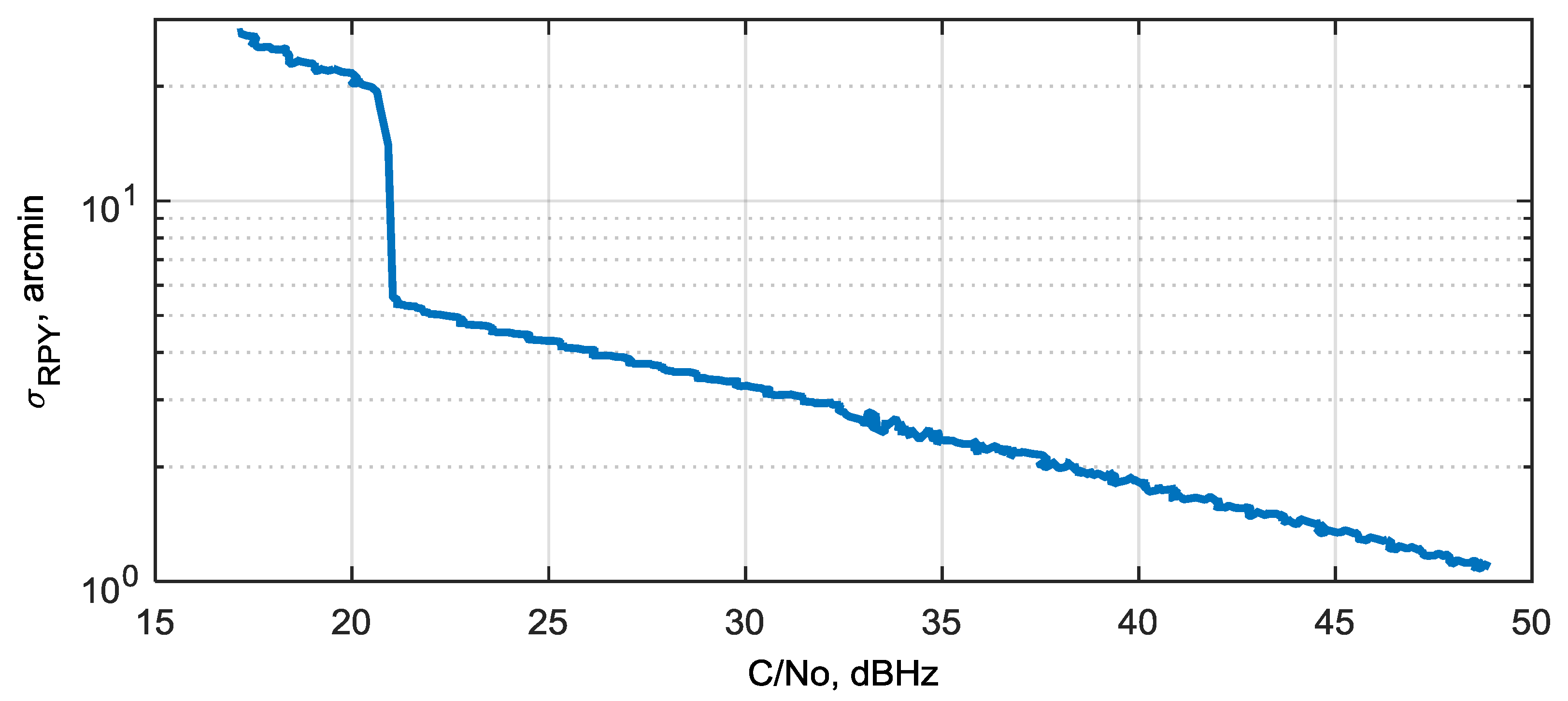
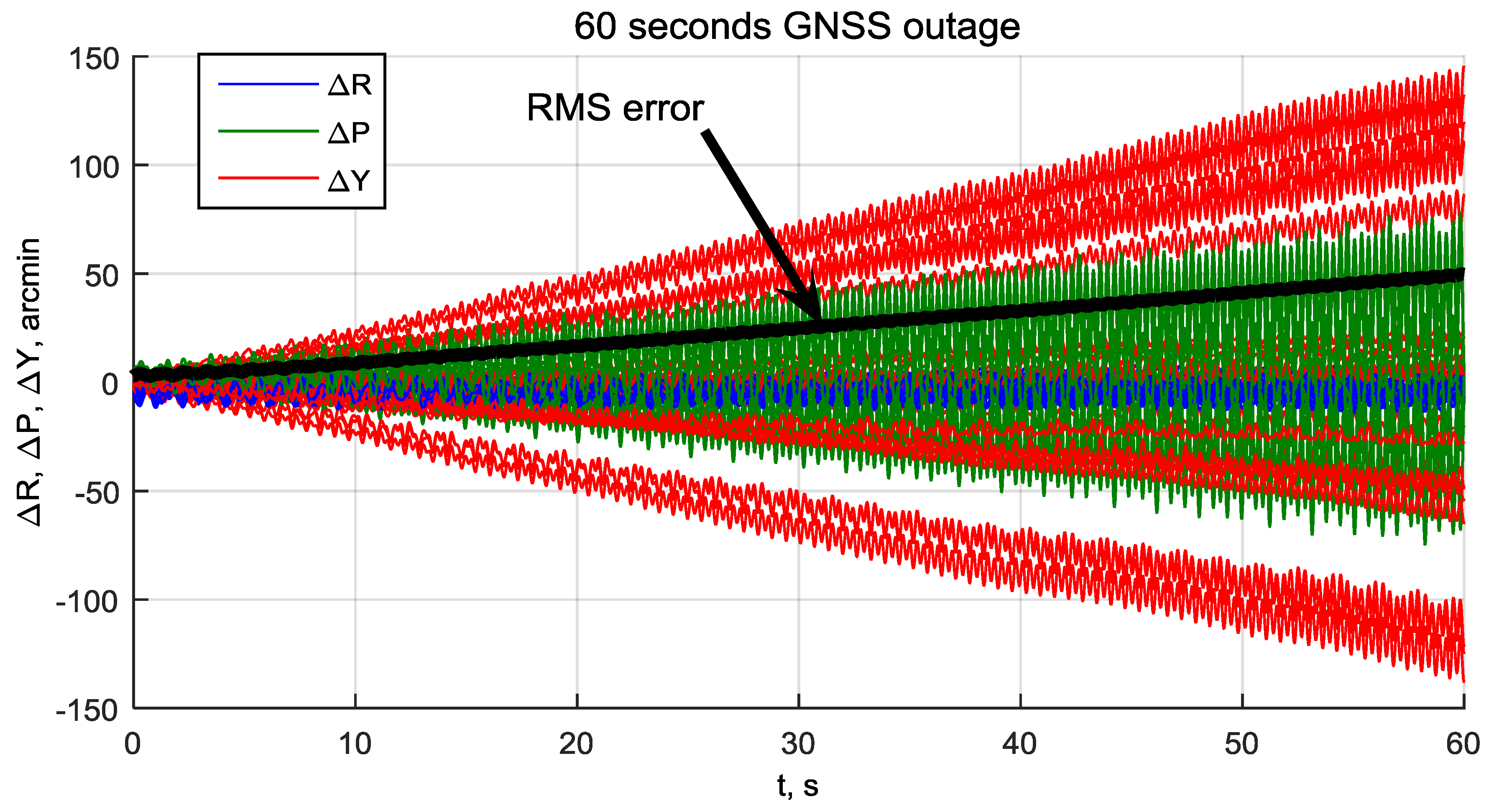

| Parameter | Value |
|---|---|
| From-run-to-run bias stability | ±2 (°/s) |
| Angular random walk (standard deviation) | 7 × 10−3 () |
| Flicker noise (standard deviation) | 6.6 × 10−3 (°/s) |
| Scale factor error | ±10−2 |
| Axis-to-axis misalignment | ±0.05° |
| Linear acceleration effect on bias | ±0.05 (°/s/g) |
© 2020 by the authors. Licensee MDPI, Basel, Switzerland. This article is an open access article distributed under the terms and conditions of the Creative Commons Attribution (CC BY) license (http://creativecommons.org/licenses/by/4.0/).
Share and Cite
Perov, A.; Shatilov, A. Deeply Integrated GNSS/Gyro Attitude Determination System. Sensors 2020, 20, 2203. https://doi.org/10.3390/s20082203
Perov A, Shatilov A. Deeply Integrated GNSS/Gyro Attitude Determination System. Sensors. 2020; 20(8):2203. https://doi.org/10.3390/s20082203
Chicago/Turabian StylePerov, Alexander, and Alexander Shatilov. 2020. "Deeply Integrated GNSS/Gyro Attitude Determination System" Sensors 20, no. 8: 2203. https://doi.org/10.3390/s20082203
APA StylePerov, A., & Shatilov, A. (2020). Deeply Integrated GNSS/Gyro Attitude Determination System. Sensors, 20(8), 2203. https://doi.org/10.3390/s20082203





